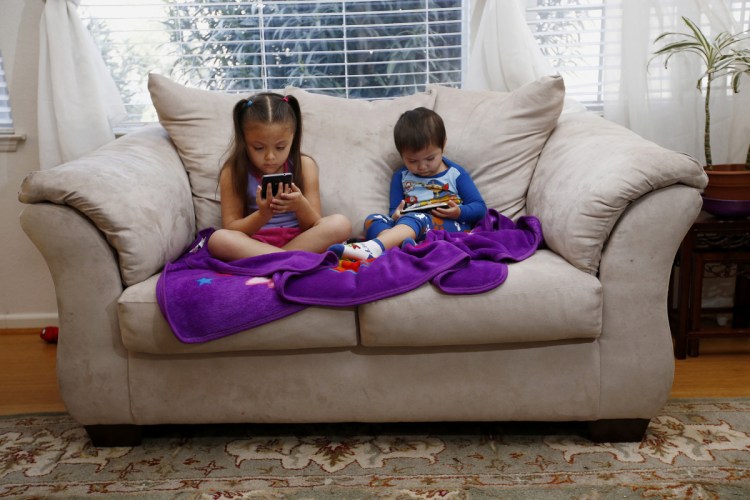Any parent who has had to compete with a phone screen for the attention of a child knows what research is starting to show – that the constant flow of information from a smartphone is hard to ignore, and in many young Americans it is leading to behavior not dissimilar from drug addiction.
What to do about that, however, is an open question – it is a smartphone-centric world now, and there are real benefits to being so connected.
That’s why two major investors in Apple have asked the company to lead the way in defining this relatively new dilemma. In an open letter, Jana Partners and the California State Teachers’ Retirement System, which together hold $2 billion in Apple stock, say the company should use its resources and influence to help technology companies and parents find the appropriate level of use for children of different age groups.
The letter outlines what we are up against, what Sean Parker, Facebook’s founding president, recently called the “social validation feedback loop that exploits how human brains work.”
The potential for “likes” and comments, and the promise of new information with each swipe of the finger, hit our pleasure centers and keep us coming back. Ultimately, it can change how we respond to stimuli, both on and off screen. For people with developing brains, it can be especially problematic.
Research shows that the average American teenager got their first phone at 10 and spends more than four hours a day on it. Most check the device at least hourly and feel pressure to respond immediately to texts and other communications.
Kids who spend a lot of time on the phone sleep less and can’t concentrate as well. They can have trouble in social interactions away from their phone. They are at a higher risk of depression and suicide.
The constant urge to see what’s new also takes away from life in other ways. With so many hours spent staring at a screen, where is the time for reading, creating or physical activity? How can one learn to relax, or to revel in the quiet moments, when every free second standing in line, sitting at dinner or even walking down the street is cause to pull out the phone?
That’s not to say that children shouldn’t have phones at all. Smartphones are a tool, and if used correctly, they are an extremely helpful one. Figuring out just what constitutes the right amount of use is where Apple comes in.
The letter from the investors suggests the company convene a committee of experts to study and monitor the issue, conducting research where it is needed, and turning what we know into tools and options that make smartphones safer for young users.
That kind of initiative could reveal more about the correct way and age to give a child a phone. It could produce controls and strategies for limiting compulsive use. It could push social media firms to rethink the ways in which they’ve designed their products to take advantage of brain chemistry.
Ultimately, it will be up to parents to enforce the proper use of technology by their children. But they shouldn’t have to do it alone. Apple and other companies like it have made billions of dollars creating products designed to hook users, and they have an obligation to address the problems that has caused.
Send questions/comments to the editors.



Comments are no longer available on this story